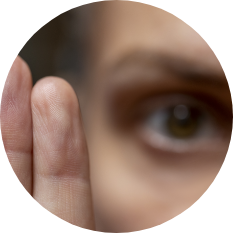You Get To Teach People How To Treat You
It’s something we’re not always taught as children growing up. We’re taught to obey, share our toys, be kind to others, and listen to our elders as we attempt to follow our dreams. But as we age, we start developing our opinions and our value system. Often, we are pressured to conform to the needs of others versus our own. How do we set boundaries for ourselves so that we can thrive?
Did you know there are three main types of boundaries?
CLEAR boundaries
RIGID boundaries
OPEN boundaries
CLEAR boundaries are flexible, and adaptable, supportive and provide stability within a family or relationship. Clear boundaries are when you are assertive, clearly communicate your needs and develop your own interests without fear of consequences.
RIGID boundaries are inflexible and isolating. More isolation can lead to difficulty communicating your needs. Analogies are usually helpful because your brain likes images; imagine a tree so rigid that it snaps in the wind because it is inflexible. RIGID boundaries are rarely helpful in most relationships because you are without ability to be either compassionate or empathic.
Emotional boundaries are priceless.
OPEN boundaries are fluid and ambiguous, which means it can be hard to have your needs met without knowing those limits. OPEN boundaries are often associated with co-dependent behaviors, which are always unhealthy.
Having HEALTHY boundaries is key to developing into the person you desire to become. Reflect on your childhood and how you are today as an adult. Take a moment to reflect on your boundaries.
Are your boundaries HEALTHY?
Some examples of healthy boundaries include being able to say “No” without apology, communicating your needs and wants, and respecting other’s values and beliefs, while concurrently respecting your own.
There are a variety of categories that boundaries fall into, such as physical, intimate, emotional, material, and time. You can probably guess what physical and intimate boundaries are- having autonomy over your body. If someone wanted to give you a hug, and you didn’t want to hug then you have the right to communicate your preferences (without apology) and offer an alternative greeting. Being intimate with someone also has boundaries regarding what you’re comfortable with, what you’re not comfortable with and how that is communicated. Building awareness to your own reactions to how others treat you, and how you feel when information you have entrusted to others is shared without your permission.
Material and time boundaries are just as important as any other boundary. Finances can be stressful. And, if you are pressured to lend money or spend more than you want, it can increase your stress. Time boundaries come into play when you are taking on new things and struggle to find balance. As the airline stewardess would say, “Put your mask on first before attending to others.” You simply cannot give from an empty well.
Reflect on your own boundary settings with various people in your life at work, at home and socially.
Are your daily boundaries clear, rigid or open? Boundaries are a metaphorical STOP 🛑 sign in your life to pause & reflect. Understanding the reasons why you set boundaries and how it benefits you can make it easier for you to establish and maintain them, beginning today. While there are several different types of boundaries. Having healthy boundaries are synonymous with CLEAR boundaries. If you are tired of the feeling of wanting to be everything for everybody every time, setting clear boundaries can be your first step to lasting change. Less burnout and more time for you. Now *that* is something to get excited about. Teaching others how to treat you is your birthright. Learning to do it without apology frees you from feeling bad about it. You got this.

